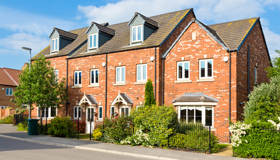Your Business and Industry
The Q4 2022 BTL Barometer
In our regular quarterly BTL barometer, the Landlord Panel reveal their rent increase intentions and other trends being experienced in the PRS and their intermediary market.

In this latest research by our partners BVA BDRC, Quarter 4 2022 shows some robust conditions being experienced across the BTL sector.
81% of landlords said they were making a profit from their letting activity, down 5% on the figure from the previous quarter, however, for those landlords who have four to five properties, 90% said they continued to make a profit. Overall, the Landlord Profitability Index fell six points quarter-on-quarter, with this result down to a larger number of landlords now reporting they are ‘breaking even’ financially on their investments.
The impact on profitability may lead to a greater number of landlords choosing to raise rents in 2023. In doing so, larger landlords are likely to be the most aggressive in this – these were said to be 20% more likely than average to levy an increase in the first half of the year but while typical rents are likely to increase by 7.7%, landlords with the smallest number of properties are likely to seek the highest increases at 8.7%.

Landlords reported that ‘increased running costs’ were the most common driver for rental increases, while 61% said they would be increasing rents to align with their local market, and 47% said it was rising mortgage costs that would require them to raise rents – this was up from 41% in Q3 2022.
Focusing on a ‘typical portfolio’, in Q4 2022 this was said to be worth around £1.4 million, generating an annual gross rental income of £62,000. Average portfolio values and gross rental incomes were suggested to have softened slightly since Q3. At an average portfolio size of 7.5 properties, the typical property value is £186,400, which generates an annual income of £8,267 or £689 a month (+£21 vs Q3).

This typical portfolio of 7.5 properties is almost equally divided by mortgagees and outright owners. Fractional and commercially funded property account for a very small proportion of rental properties and the reliance on BTL funding increases as portfolio sizes grow.
Terraced houses remain the predominant property type. At the top end of the market, 20+ property landlords show a strong preference for houses, whereas the incidence of flats peaks in the 11-19 property segment. Short term lets are most numerous in the 20+ segment, though penetration remains relatively low. Landlords letting in the North of the country lead on take up of terraced houses and London landlords prefer flats.
This data represents a thorough evaluation of the current BTL marketplace and we hope that is offers some valuable insight from a portfolio standpoint.
FOR INTERMEDIARIES ONLY



